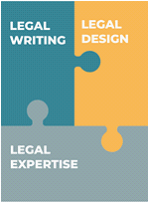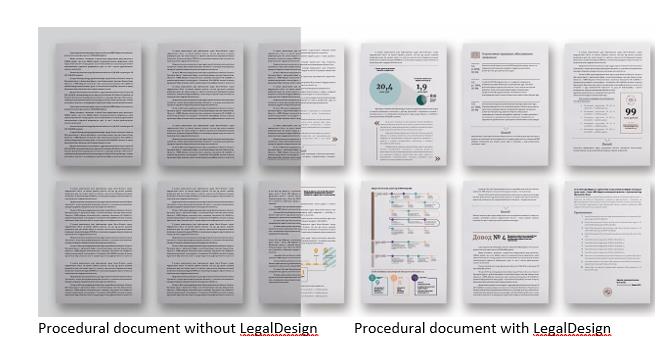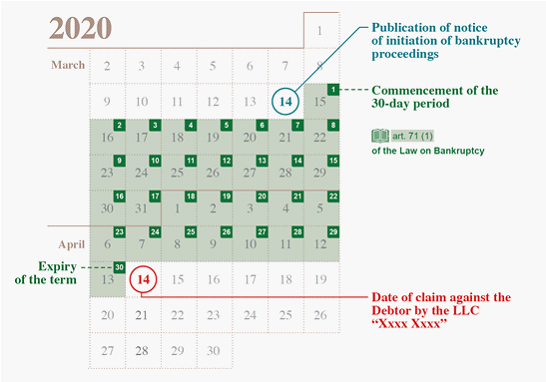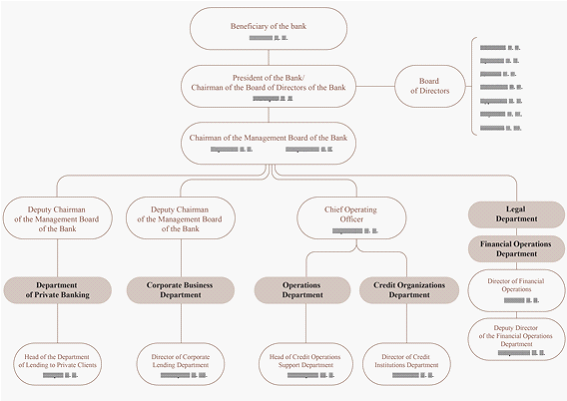Abstract
This article is devoted to an overview of the innovative Legal Design practice in civil and arbitration proceedings. The paper establishes what a procedural document should be to most effectively respond to the challenges that participants of the judicial process have to face in modern conditions. The authors believe that the definition of the content and tools of the ideal procedural document concept will positively affect a specific, single case and the entire judicial system in general. The visualized examples show several principal elements (tools) of Legal Design that can be used in procedural documents. In addition, the triad of the concept of an ideal procedural document is justified, and the place of Legal Design is indicated. As a research result, arguments are presented to prove the effectiveness of the use of Legal Design. The authors also made assumptions about why Legal Design has not yet found its popularity among lawyers today. The authors conclude that the rational implementation and application of Legal Design is beneficial for all participants in the proceedings.
Keywords: Arbitration process, civil process, legal Design, procedural document, visualization
Introduction
2020 saw multiple restrictions on the judicial system work due to the coronavirus infection spread, and the Arbitration Court of Moscow considered 234,635 cases. These correspond to the burden on the judge to hear 266 cases per month. For comparison, in 2018, when the courts were still considering cases in the normal mode, the Arbitration Court of the city of Moscow considered 415,967 cases (almost twice as many as in 2020), which on average corresponds to the workload of one judge hearing 40-60 cases per day. It is worth noting that these statistics are not something exceptional. It is more a widespread practice, which is also aggravated every year.
At the same time, the average volume of case materials is 450 sheets, and one court session lasts on average about 10 minutes. Of which only half remains with the judge to hear the parties and study the case due to complying with mandatory procedural aspects.
These numerical indicators provide a rather colorful opportunity to immerse in the conditions in which litigation is being considered.
Problem Statement
These indicators demonstrate one of the main problems of today's judicial system: the judge has little time to study the case, and lawyers have little time to present arguments during the court session. In such conditions of critical time shortage, judges pay great attention to the study of procedural documents prepared by trial participants. The procedural documents today have a decisive influence on the perception of information on the case and the judge's decision-making. Trial participants should pay specific attention not only to the content but also to the design of the procedural document.
Research Questions
The concept of an ideal procedural document consists of the following triad: Legal Expertise, Legal Writing, and Legal Design (Figure 1). Each of these terms hides one of the elements of an ideal procedural document without which the other two will significantly suffer the effectiveness, which will reduce the credibility of the entire procedural document and, accordingly, the chances of a successful resolution of the dispute.

Let's take a closer look at each of the triad components of an ideal procedural document.
So, we should understand Legal Expertise as knowledge of the laws to apply them in practice. First of all, the document must be flawless from a legal point of view. It is necessary to know the legislation well to build arguments based on them, drawing up such a document.
Legal Writing is the ability to present an argument in a competent language so that the judge understands it with minimal time. Since under the conditions of the workload indicated earlier, the probability that the judge will have the opportunity to re-read the procedural document several times is close to zero. Thus, legal writing skills are no less important than knowledge of the laws (Inshakova et al., 2020).
However, for the document to be convenient to study, it is necessary to consider the correct information design, a clear visual structure, and correctly placed accents. Legal Design is responsible for the visual presentation of information in the document.
Legal Design is a modern approach to the procedural and other documents, where the procedural position, evidence, and different information in the documents are presented to the principal or court. It is given not only in the form of text but also graphically: via the visualization of data and concepts, using typographic layout techniques and other design tools (Figure 2).

Purpose of the Studу
The purpose of this study is to establish what a procedural document should be to most effectively respond to the challenges that trial participants have to face in the conditions described earlier. Determining the content and tools of the ideal procedural document will have a positive effect not only on a specific, single case but also on the entire judicial system as a whole.
These are because increasing the effectiveness of each procedural document will mainly correspond to compliance with the principle of procedural economy – the effective use of procedural remedies and reduction of time and labor resources while maintaining the level of procedural guarantees.
Research Methods
Legal Design is an interdisciplinary phenomenon existing at the intersection between design, technology, and law. In this regard, we used the whole complex of universal, general scientific, and private-scientific methods and methods of cognition, including systemic, functional, logical, comparative, and other scientific research methods in the course of this study. We used modern general scientific techniques: explanation, analysis, synthesis, analogy, abstraction, and deduction to solve private-research problems.
The integration of these methods allowed identifying existing problems and formulating practical proposals in the field of application of Legal Design in civil and arbitration proceedings since this research is primarily applied and practice-oriented.
Findings
To date, not all of the previously mentioned elements of an ideal procedural document have been developed in practice. So, the basics of legal education include Legal Expertise and Legal Writing in one form or another. Though, the use and application of Legal Design are catastrophically underestimated despite its effectiveness.
It is also not popular to talk about the widespread use of Legal Design in practice – only a few lawyers resort to using its tools in their work.
Let's look at the effects of using Legal Design understand why this application has not yet become popular.
Firstly, Legal Design helps to make the document clearer. Graphic solutions and data visualization help present complex information in a more accessible form. Visualization tools allow placing accents and highlighting the main thing from an enormous array of information. "Convincing," first of all, means "understandable" (Vityukova, 2020).
Secondly, the use of Legal Design elements in the procedural document allows the judge to draw attention to a procedural position and its key and most beneficial arguments (Bezbakh & Frolova, 2022). Visual presentation and neat layout create a beautiful document drawing the judge's attention and making it more convenient to study.
Thirdly, the use of Legal Design increases the chances of winning (Ermakova & Frolova, 2022). This application allows the judge to perceive an enormous array of information and data due to a layout with a clear structure and navigation. At the same time, the presentation of complex information in a visual format reduces the judge's time to study procedural documents, which increases the likelihood of the judge forming an understanding of the case materials and the stated position. As a result, the judge is more likely to take the position of the party in which he managed to understand and which became more understandable to him (Ermakova et al., 2021).
As noted before, Legal Design is a complex phenomenon that combines elements from design, technology, and law. For effective structuring of information and its correct submission to the court, lawyers, together with designers, need to take into account the "user experience." In the context of Legal Design, "user experience" should be understood as the judge's perception and his response arising from the study of a procedural document containing elements of Legal Design (Frolova & Rusakova, 2021).
There are several approaches to understanding the nature of Legal Design: some are inclined to believe that Legal Design is an integral part of Legal Tech (Yankovsky, 2019), while others consider that Legal Design is a parallel and autonomous phenomenon from technology (Schniger, 2020, 2021). Even though previously stated that Legal Design is a complex phenomenon existing at the intersection of several areas, including technologies, the authors of this paper share the opinion that Legal Design and Legal Tech are not interdependent phenomena and pursue different goals. These objectives are solved through the use of diverse (for the most part) tools, and their possible interconnection does not infringe on the effectiveness of their independent application (Hagan, 2020; Eremeev et al., 2019).
Let's consider a few principal elements (tools) of Legal Design that we can use in procedural documents:
- Icons serve to focus on the structural components of the procedural document;
- Timeline reveals the chronology of a complex and long chain of events (Figure 3);
- Diagram shows connections or explains a complicated process (Figure 4);
- Illustration conveys the meaning of complex technical concepts;
- Graphs and charts show data, statistics, or complex calculations (Figure 5).

An example of using a scheme in a procedural document (Advokatskoye byuro …, 2021)

At the same time, we should emphasize that the specified list of Legal Design elements is not exhaustive and is not universal since everything depends on the specific factual circumstances of the case, the subject of the dispute, and the like. The visual element should be selected and used so that it helps in solving a specific task (Ruttenberg, 2017) and does not serve as a meaningless colorful illustration on a piece of paper (Noskov, 2021).
So why hasn't Legal Design still not become widespread in preparing procedural documents with a formed set of tools and visible effectiveness? It remains only to assume, but there may be the following possible reasons among them.
Every year, the legal language is becoming complex both at the level of the legislature and ordinary lawyers. Complex legal constructions are becoming synonymous with professionalism. There is a strict division of society into lawyers and non-lawyers, to whom the legal world remains inaccessible. Legal Design, on the contrary, is focused on simplifying complex procedural documents and creating a more accessible and easy-to-understand form. Thus, we can say that Legal Design in this sense "goes against the system," so lawyers brought up in classical school are not inclined to quickly perceive such drastic changes, partly even of an ideological nature.
Unpredictability is also a concern. Because Legal Design has not yet received proper testing in domestic legal practice, lawyers are afraid of a possible unfavourable reaction from judges (Rusakova et al., 2021). Historically known, everything new at first often causes an opposing traditionalists' and conservatives' reaction, so many lawyers tend to try out Legal Design on their colleagues, look at it from the outside, and then decide on its use in their procedural documents. Such logic significantly slows down the development and dissemination of Legal Design processes in civil and arbitration proceedings. Even though such a fear seems to the authors superfluous and inappropriate to reality, it is quite understandable and, unfortunately, its overcoming is possible only with time.
In addition, there is an opinion that Legal Design is attempting to replace the content with a form and create a "glossy magazine" from a procedural document without meaningful legal argumentation. However, this fear is groundless since, as mentioned earlier, in the concept of an ideal document, Legal Design is only one of the links of the triad and does not replace but complements Legal Expertise and Legal Writing.
Conclusion
Summarizing the above, we can say that Legal Design in litigation is the solution to the judges' high workload. If we change the form of presentation of information in procedural documents to a more accessible one, everyone will benefit from this: judges, disputes participants, and their representatives.
Legal Design is an approach to building and submitting arguments, where information is presented not only through text but also visually: complex concepts and processes are shown through diagrams, big data is displayed on a graph, and if it is crucial to focus on deadlines, timelines are used. These allow conveying the essence of the arguments to the judge and assuring him of the correctness of his procedural position, even if the judge has very little time during the court session.
At the same time, the essence of Legal Design should not be reduced to primitive visualization for the sake of visualization and originality for the idea of being original. Legal Design, first of all, is an effective solution to a specific task.
Ultimately, Legal Design is effective not just for a specific case during which professionals use Legal Design tools. They are efficient for the entire judicial system since judges can understand the case materials with visualized, clearly structured documents in more detail when pressed for time and make fair decisions that are less likely to be challenged by higher courts in the future.
Acknowledgments
This work was financially supported by the Grant of the President of the Russian Federation No. NSh-2668-2020.6 «National-Cultural and Digital Trends in the Socio-Economic, Political and Legal Development of the Russian Federation in the 21st Century».
References
Advokatskoye byuro goroda Moskvy «Bashilov, Noskov i Partnery» [The law office of the city of Moscow "Bashilov, Noskov and Partners."]. (2021). https://bnplaw.ru
Bezbakh, V. V., & Frolova, E. E. (2022). Augmented Reality and Civil Law Regulation of Business Relations. Smart Innovation, Systems and Technologies, 254, 29-37. DOI:
Eremeev, S. G., Mayorov, A.V., & Minchenkov, E. N. (2019). O yuridicheskom kontsepte napravleniya LegalTech: perspektivy stanovleniya i razvitiya [About the legal concept of the LegalTech direction: prospects of formation and development]. Leningrad Law Journal, 2, 9-18.
Ermakova, E. P., & Frolova, E. E. (2022). Using Artificial Intelligence in Dispute Resolution. Smart Innovation, Systems and Technologies, 254, 131-142. DOI:
Ermakova, E. P., Frolova, E. E., & Sitkareva, E. V. (2021). International Economic Integration and the Evolution of the Principles of Civil Procedure. Lecture Notes in Networks and Systems, 198, 1589-1597. DOI:
Frolova, E. E., & Rusakova, E. P. (2021). Trends in the Development of Alternative Ways of Dispute Resolution of Neo Industrialization Subjects. Lecture Notes in Networks and Systems, 198, 1842-1849. DOI:
Hagan, M. (2020). Law by Design. www.lawbydesign.co
Inshakova, A. O., Frolova, E. E.; Rusakova, E. P., & Kovalev S. I. (2020). The model of distribution of human and machine labor at intellectual production in industry 4.0. Journal of Intellectual Capital, 4, 601-622. DOI:
Noskov, I. (2021). Pomogi sud'ye razobrat'sya v dele. Instrumenty Legal Design, chtoby donesti pozitsiyu [Help the judge solve the case. Legal Design tools to convey the position]. Korporativnyy yurist, 5, 60-63.
Rusakova, E. P., Frolova, E. E., & Inshakova, A. O. (2021). The procedure of mediation in the age of industry 4.0. Lecture Notes in Networks and Systems, 198, 947-953. DOI:
Ruttenberg, K. L. (2017). Images with Impact: Design and Use of Winning Trial Visuals. American Bar Association.
Schniger, D. O. (2020). Pravovaya estetika, ili pravo kak iskusstvo [Legal aesthetics, or law as art]. Bulletin of the O. E. Kutafin University, 7, 113-120. DOI:
Schniger, D. O. (2021). Tekhnika, dizayn i estetika v yuridicheskom obrazovanii: itogi nauchno-prakticheskogo seminara (10 aprelya 2021 g.). [Technique, design and aesthetics in legal education: results of a scientific and practical seminar (April 10, 2021)]. Aktual'nyye problemy rossiyskogo prava, 8, 207-212. DOI:
Vityukova, A. O. (2020). Legal Design – resheniye problemy dostupnym obrazom [Legal Design - solving the problem in an accessible way]. Voprosy rossiyskoy yustitsii, 6, 497-507.
Yankovsky, R. M. (2019). Legal design: novyye vyzovy i novyye vozmozhnosti [Legal design: new challenges and opportunities]. Zakon, 5, 76-86.
Copyright information

This work is licensed under a Creative Commons Attribution-NonCommercial-NoDerivatives 4.0 International License.
About this article
Publication Date
03 June 2022
Article Doi
eBook ISBN
978-1-80296-125-6
Publisher
European Publisher
Volume
126
Print ISBN (optional)
-
Edition Number
1st Edition
Pages
1-1145
Subjects
Social sciences, education and psychology, technology and education, economics and law, interdisciplinary sciences
Cite this article as:
Frolova, E. E., & Bashilov, B. I. (2022). Innovative Practice Of Legal Design In Civil And Arbitration Proceedings. In N. G. Bogachenko (Ed.), AmurCon 2021: International Scientific Conference, vol 126. European Proceedings of Social and Behavioural Sciences (pp. 290-297). European Publisher. https://doi.org/10.15405/epsbs.2022.06.33

